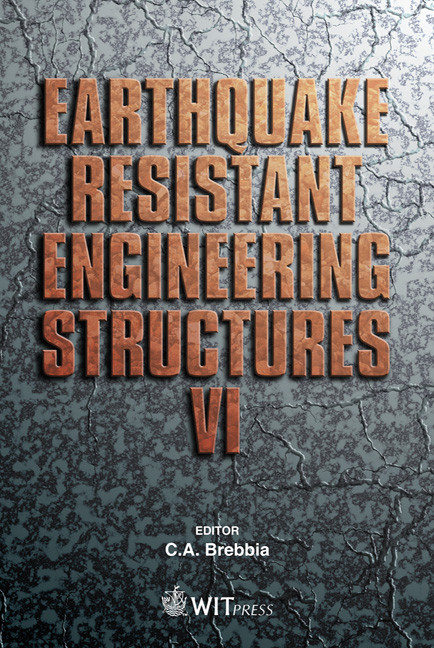Development Of A Digitally-controlled Single-axis Earthquake Shake Frame For Masonry Walls Testing
Price
Free (open access)
Transaction
Volume
93
Pages
9
Published
2007
Size
531 kb
Paper DOI
10.2495/ERES070331
Copyright
WIT Press
Author(s)
M. J. Guzman & S. L. Lissel
Abstract
For the evaluation of masonry specimens’ response under seismic forces, a 2- actuator, single-axis shake frame was developed at the University of Calgary. The system works with hydraulic power and contains specialized hardware and software for management and control. These include MTS Multipurpose TestWare for the control of the Hydraulic System and National Instruments SCXI and LabVIEW for the data acquisition. Tests using the El Centro earthquake (1940) with just the shake frame mass, and with additional mass (two 200 mm concrete masonry walls 1 m long x 1.6 m high), indicated the satisfactory functionality of the shake frame. In addition, a comparison between the masonry walls’ behaviour under earthquake loads and a finite element (SAP2000) model was carried out and is presented here. Keywords: shake frame, shake table, masonry, seismic load simulation. 1 Introduction Structures are designed and built to withstand a variety of load conditions keeping in mind safety and economics. In the case of earthquake loads, some structures are more vulnerable than others. Depending on which material the structures are made of, their response and resistance to seismic forces will vary. Masonry structures, for example, are able to resist earthquake loads as long as they are properly designed but, to achieve that, studies and experimentation must be done. Since masonry is not a homogeneous material, the dynamic behaviour of masonry structures is a complex matter. The interaction between masonry units, mortar, grout and the reinforcement create a significant number of variables that influence the response of masonry to dynamic loading;
Keywords
shake frame, shake table, masonry, seismic load simulation.





